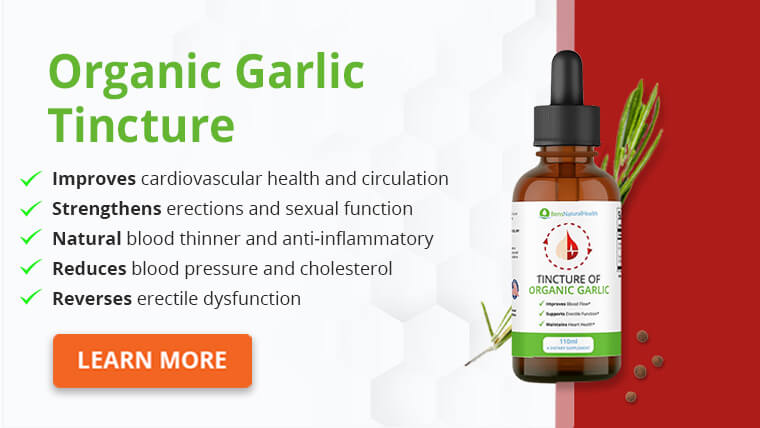Have you been having an uncomfortable feeling down there?
Is your genital area constantly itchy?
Or, are you having more discharge than usual?
If your answer to these questions is “Yes,” your vaginal pH may be unbalanced.
Vaginal pH is an important indicator of vaginal health.
Having the right pH allows the host of microorganisms that stay in your vagina (normal flora) to live in harmony.
This helps to protect you from various conditions.
In this article, we tell you everything you need to know about vaginal pH, including the normal pH ranges, signs of an unbalanced pH, things that can throw off your vaginal pH, and how to balance your vaginal pH.
What is a normal vaginal pH level?
pH is measured based on a scale of 0 to 14. Seven is neutral. Numbers below seven are acidic, and numbers above seven are alkaline or basic.
The normal vaginal pH is on the acidic side and ranges from 3.8 to 5
However, what’s considered normal can vary with age and your menstrual cycle. Before you hit menopause, vaginal pH is normally less than or equal to 4.5. However, after menopause, it tends to be more than 4.5.
The vagina’s moderate acidity is a natural defense against the growth of harmful microorganisms.
Disruptions in your pH balance can increase your risk of conditions like bacterial vaginosis (BV) and vaginal candidiasis (yeast infection).
How to balance vaginal pH
If you have been having signs that your vaginal pH is out of balance or if you’re looking for ways to prevent pH disturbances, here are some simple remedies to try:
1) Probiotics
Probiotics are foods and other consumables that contain live microbes. Eating more probiotics may help improve or maintain the normal flora in your body and promote healthy vaginal pH.
Fermented foods are rich natural sources of probiotics. Examples include:
- Yogurt
- Sour milk
- Buttermilk
- Soft cheeses
- Kefir
- Sourdough bread
- Pickles
- Sauerkraut
- Tempeh
There are also lots of probiotic supplements you can try. Just remember that the efficacy of these supplements is still debatable, and more research is needed.
2) Garlic
Garlic is widely known for its antibacterial and antifungal properties. One study showed that garlic tablets may be as effective as antibiotics for treating certain vaginal conditions while producing fewer side effects.
Garlic also has loads of other health benefits, including improved digestive function, boosted immunity, clearer skin, and improved cardiovascular health.
Do not use garlic directly in or around your vagina. This can cause irritation and further pH disturbance.

3) Apple Cider Vinegar (ACV)
Like garlic, ACV is well-known for its antibacterial and antifungal properties. Apple cider vinegar is produced from the fermentation of crushed apples.
The fermentation process leads to the production of acetic acid and lactic acid bacteria, among others.
These may serve as probiotics that promote the growth of healthy bacteria in your vagina. The acidic nature of ACV is also believed to help balance vaginal pH. However, further studies are needed to back these claims.
If you’d like to try ACV for restoring pH balance, be sure to only take it by mouth. Either dilute it in a glass of water or take it in supplement form.
Using ACV directly on your vagina may be harmful. It may cause irritation and further disruption of your pH balance.
4) Water
Being dehydrated can lead to vaginal dryness and irritation. This may disrupt your vagina’s pH balance. Ensure that you’re drinking lots of water and other fluids daily. As a woman, you should be drinking at least 2.7 liters of water every day.
5) Use condoms during sex
Semen generally has a pH of 7.1 to 8, which is slightly alkaline. When your vagina is exposed to semen during unprotected sex, the pH briefly increases.
According to one study, higher levels of exposure to semen may increase the risk of bacterial vaginosis.
Using barrier protection methods like condoms during penetrative sex may help reduce the alkalizing effect of semen on the vagina.
Other barriers like dental dams and finger cots may also help prevent the introduction of bacteria into the vagina during sex.
Things to avoid that can throw off your pH balance
Now that you know some things you should be doing to promote a healthy vaginal pH, let’s discuss what you should avoid:
1) Douching
Douching refers to the practice of cleaning the inside of the vagina with water or a liquid solution.
Many women believe they have to clean their vaginas the same way they clean the rest of their bodies. However, there is no need for this.
The combination of secretions, acidity, and normal flora keeps the vagina clean. Putting anything in your vagina in an attempt to clean it will just disrupt its natural ecosystem.
2) Using harsh cleaning products
All you need to do when cleaning your pelvic area is to wash your vulva, the external part of your genitals (not your vagina), with warm water.
You don’t need to use soap. Soaps usually have a high (alkaline) pH, and applying them around your vagina may disrupt its naturally acidic pH.
If you must use soap, be sure to stick to mild, fragrant-free soaps. Harsh soaps may cause irritation.
3) Wearing sanitary products for too long
While menstruating, you need to change your sanitary products regularly – for a few reasons.
Firstly, menstrual blood has a higher (alkaline) pH than the vaginal area. Leaving the blood in contact with your vaginal area for extended periods can increase your vaginal pH levels.
Secondly, regardless of how heavy or how light your menstrual flow is, bacteria start to build up in your sanitary products when they are left in place for long. This can lead to complications like toxic shock syndrome.
According to the American College of Obstetricians and Gynecologists (ACOG), you should change your pad at least every four to eight hours. However, you should keep in mind that this is a general recommendation.
The frequency with which you change your pad depends on how heavy your flow is, the nature of the pad you’re using, your level of activity, and your comfort.
If you bleed heavily and your pad is not very absorbent, you may need to change more often.
Like pads, tampons should be changed every four to eight hours. If you are using a menstrual cup, it should be removed, emptied, washed, and re-inserted at least twice daily.
4) Wearing non-breathable underwear
Synthetic fabrics like nylon tend to trap heat and moisture, which favors the growth of bacteria and yeast.
Wearing tight clothes around your genitals has the same effect. It is best to wear breathable fabrics (like cotton and linen) and wear loose-fitting clothes around your genitals.
Here are a few other underwear-related tips to keep in mind:
- Don’t keep on moist underwear after swimming or working out.
- Change your underwear if you feel like you have a lot of moisture buildup during the day.
- At night, you can go panty-free to allow increased airflow.
- Wash your underwear with hypoallergenic detergent to prevent irritation.
5) Using antibiotics excessively
Antibiotics, particularly broad-spectrum antibiotics, can kill off healthy bacteria in your vagina and disrupt the normal pH balance. This can predispose you to yeast infections.
You should only use antibiotics if a doctor prescribes them for you. You can also try eating more probiotics to promote the growth of healthy bacteria when using prescribed antibiotics.
6) Taking too much sugar
Excessive sugar in your blood can trigger higher pH levels and promote the growth of yeast and bacteria.
You should limit sugar-rich foods and drinks like soda, ice cream, and candy. Try to eat a balanced diet.
If you are diabetic, speak with a doctor about how to keep your blood sugar under control.
7) Being stressed
Stress can negatively affect various aspects of your health, and according to various studies, your vaginal health is included.
While stress is unavoidable, there are many healthy ways you can deal with stress and reduce its adverse effects on your health.
These include practicing mindfulness, deep breathing, taking hot baths, and listening to calm music.
8) Smoking
A 2018 study found that non-smokers had a higher proportion of Lactobacilli in their vagina than smokers.
As already mentioned, Lactobacilli are important for vaginal health because they produce acid, which helps keep the vaginal pH in the healthy range. So, smokers may be at increased risk of pH disruptions.
Smoking also has loads of other harmful effects on health. If you smoke and need help with quitting, speak with your doctor. They can help set up a cessation plan for you.
Get Your FREE Sleep Guide
- Learn how to naturally improve your sleep
- Dietary recommendations, supplements, and lifestyle changes
- Developed exclusively by our medical doctor
How can I tell if my pH balance is off?
If your vaginal pH is disrupted, there are some signs you may notice:
Change in vaginal discharge
Normally, the nature of your vaginal discharge varies depending on which point in your cycle you’re at. It may vary from clear to white in color and from thick to thin and slippery in texture.
No matter what point in your cycle you’re at, normal vaginal discharge should not have an offensive smell.
If you notice a change in the nature of your discharge, it may be a sign of imbalanced pH. Changes include:
- Gray, brown, green, or yellow color.
- An increased amount of discharge.
- Clumpy cottage cheese-like texture.
- Foul smell or fishy odor.
Discomfort around the genital area
When your vaginal pH is off, you may experience discomfort in various forms. These include:
- Itchiness in and around the vagina.
- Burning sensation while peeing.
- Pain during and/or after sex.
When to see a doctor about your pH balance
You should speak with your healthcare provider if you notice any of the following symptoms:
- Pain in your lower abdomen
- Pain in your pelvis
- Abnormal vaginal bleeding or discharge
- Fever
- Vomiting
- Lightheadedness or fainting
You should also speak to a doctor if you have tried home remedies but symptoms are not improving within a few days. Or if you have recurrent symptoms.
How long does it take to get your pH back to normal?
How long you will take to recover depends on what caused the pH disruption in the first place and what complications you developed as a result.
If you develop bacterial vaginosis as a result of the pH disruption, it may take up to two weeks for it to go away on its own.
However, in many cases, you need antibiotic treatment for it to resolve. With antibiotics, it usually goes away within a week.
Yeast infections usually don’t go away on their own, and you’ll generally need antifungal treatment to clear them up.
The majority of yeast infections resolve within a few days of treatment, but it may take up to a week or more.
Recurrence is common with both BV and yeast infections. While there is sometimes no obvious trigger, it is important to identify any triggering cause (e.g., douching) and, if possible, remove it to prevent recurrence.
Conclusion
Vaginal pH is normally slightly acidic and ranges from 3.8 to 5. This moderate acidity is protective against the growth of harmful microbes.
Signs of vaginal pH disruption include changes in the nature of vaginal discharge, such as increased amount of discharge and fishy odor.
Discomfort, such as itching of the vagina and a burning sensation during sex, can also occur.
Things that can trigger pH disruption include douching, using harsh cleaning products, eating too much sugar, dehydration, wearing sanitary products for too long, and excessive antibiotic use.
If you suspect that your pH is out of balance, some remedies you can try include probiotics, garlic, and apple cider vinegar.
If symptoms persist or are recurrent, please seek the advice of a medical professional.
Explore More








